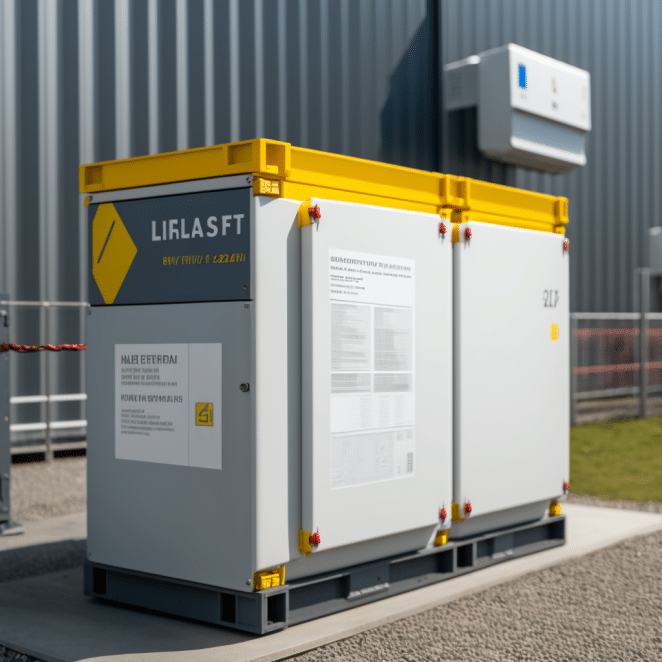The Battle Begins: LFP vs. NMC
Safety: Reducing the Risk of Thermal Runaway
Safety should be a top priority when selecting battery technology, as incidents like electric cars catching fire can cause significant damage. LFP batteries are known for their thermal stability and lower risk of thermal runaway compared to NMC batteries, making them a safer option for various applications, including EVs and residential energy storage systems.Longevity: How Many Cycles Will Your Battery Last?
When investing in battery technology, you want to ensure it lasts as long as possible. LFP batteries boast an impressive cycle life compared to their NMC counterparts. With a longer lifespan, you can maximize the value of your investment, whether it’s for solar panel sizing or EV charging stations. Learn more about battery cycle life in our comprehensive guide.Environmental Impact: Embracing Sustainable Solutions
As we face the challenges of the energy transition, it’s crucial to consider the environmental impact of the batteries we choose. LFP batteries contain no toxic heavy metals such as cobalt, making their production and disposal more sustainable. The eco-friendly nature of LFP batteries aligns with the global push for green technologies, as seen in the increasing adoption of solar farms and wind turbines.Applications: Where LFP Excels
LFP’s unique combination of safety, longevity, and sustainability make it the ideal choice for various applications:- Residential Energy Storage Systems: LFP batteries provide a safer, more reliable solution for homeowners looking to invest in solar panels or other renewable energy sources.
- Electric Vehicles: The automotive industry is shifting towards LFP batteries due to their thermal stability and reduced risk of fire. As EV charging infrastructure expands with EV charging hubs, the demand for LFP batteries will only continue to grow.
- Microgrids: LFP batteries are well-suited for microgrid applications, providing long-lasting energy storage that can withstand the demands of remote or off-grid communities.
The Verdict: LFP Shines as the Superior Choice
With their unparalleled safety, impressive lifespan, and eco-friendly nature, LFP batteries have proven themselves to be the superior choice in the energy storage market . As we continue to confront the renewable energy challenges and strive for a greener, more sustainable future, LFP technology offers a viable and responsible solution to meet our growing energy needs.Cost Considerations: LFP vs. NMC
While the advantages of LFP batteries are clear, cost considerations should not be overlooked. Historically, NMC batteries have offered a higher energy density at a lower price point, making them attractive for certain applications. However, the evolving market and ongoing research have led to significant reductions in LFP battery production costs.
The increasing demand for cobalt-free solutions and the optimization of LFP battery manufacturing processes have resulted in a more competitive pricing landscape. As the cost gap between LFP and NMC batteries narrows, the superior features of LFP batteries become even more compelling for consumers and industries alike.
Innovations and Future Prospects
The future looks bright for LFP technology as researchers and manufacturers continue to develop innovative solutions to enhance battery performance. Advances in long-duration energy storage have the potential to revolutionize grid-scale applications, making LFP batteries an even more attractive option for large solar farms and utility-scale energy storage.
Furthermore, the growing interest in Energy Management Systems (EMS) has led to the integration of LFP batteries with smart systems that optimize energy usage and reduce overall costs. As these innovations continue to emerge, LFP’s dominance in the energy storage market will only strengthen.
Final Thoughts
As we’ve explored throughout this article, LFP batteries have consistently proven themselves to be the superior choice when compared to NMC batteries. Their remarkable safety, longevity, and environmental benefits make them an ideal solution for a range of applications, from residential energy storage to electric vehicles and microgrids.
As the cost gap between LFP and NMC batteries continues to shrink and technological advancements further enhance the performance of LFP batteries, the choice becomes increasingly clear. For those looking to invest in the future of energy storage, LFP technology offers a safe, sustainable, and reliable solution.
Discover more about the fascinating world of energy storage by exploring our Energy Storage Glossary or learn about the benefits of DC-coupling in solar power systems. Stay informed and make the best choice for your energy storage needs with LFP technology.

